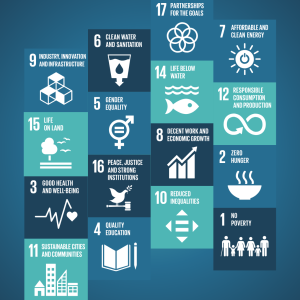Indikatoren in dieser Dimension analysieren, inwieweit Migrantinnen und Migranten hinsichtlich des Zugangs zu grundlegenden sozialen Diensten wie Gesundheit, Bildung und soziale Sicherheit den gleichen Status wie Bürgerinnen und Bürger haben. Es beschreibt die Rechte von Migrantinnen und Migranten auf Familienzusammenführung, Arbeit, Aufenthalt und Staatsbürgerschaft. Die Ratifizierung der wichtigsten internationalen Konventionen fällt ebenfalls in diesen Bereich.main.
Indikatoren in dieser Dimension bewerten die institutionellen, rechtlichen und regulatorischen Rahmenbedingungen der Länder im Zusammenhang mit Migrationspolitik. Dimension 2 beinhaltet auch das Vorhandensein von nationalen Migrationsstrategien, die mit Entwicklungspolitik und -ansätzen im Einklang stehen, sowie die institutionelle Transparenz und Kohärenz in Bezug auf Migrationsmanagement. In diesem Bereich wird auch untersucht, inwieweit Regierungen Migrationsdaten erheben und verwenden.
Diese Dimension konzentriert sich auf die Bemühungen von Ländern, in migrationsbezogenen Fragen mit anderen Staaten und einschlägigen nichstaatlichen Akteuren, einschließlich Organisationen der Zivilgesellschaft und des Privatsektors, zusammenzuarbeiten. Kooperation kann zu Verbesserungen der Regierungsführung führen, indem Standards angeglichen und angehoben, der Dialog intensiviert und Strukturen der Bewältigung von Herausforderungen geschaffen werden.
Diese Dimension umfasst Indikatoren für die Politik der Länder zur Steuerung des sozioökonomischen Wohlergehens von Migrantinnen und Migranten, z.B. die Anerkennung der Bildungs- und Berufsqualifikationen von Migrantinnen und Migranten, Bestimmungen zur Regelung der Studentenmigration und das Bestehen bilateraler Arbeitsabkommen zwischen Ländern. Die Indikatoren konzentrieren sich gleichermaßen auf Maßnahmen und Strategien im Zusammenhang mit dem Engagement der Diasporamitglieder und den grenzüberschreitenden Geldtransfers von Migrantinnen und Migranten
Diese Dimension befasst sich mit der Art und dem Grad der Bereitschaft von Ländern, wenn sie mit Mobilitätsdimensionen von Krisen konfrontiert sind, die entweder mit Katastrophen, der Umwelt und/oder Konflikten zusammenhängen. Die Fragen werden verwendet, um die Prozesse für Staatsangehörige und Ausländer sowohl während als auch Katastrophen zu ermitteln, einschließlich der Frage, ob humanitäre Hilfe für Migrantinnen und Migranten genauso verfügbar ist wir für Bürgerinnen und Bürger.
Diese Dimension analysiert den Ansatz der Länder zum Migrationsmanagement bezüglich Grenzkontroll- und Grenzschutzmaßnahmen, Zulassungsvoraussetzungen für Migranten, Vorbereitung und Flexibilität bei erheblichen und unerwarteten Wanderungsbewegungen sowie die Bekämpfung des Menschenhandels und des Menschenschmuggels von Migrantinnen und Migranten. Es werden auch die Bemühungen und Anreize zur Unterstützung der Integration der zurückkehrenden Staatsbürgerinnen und -burger bewertet.
This Profile describes examples of well-developed areas of Autonomous City of Buenos Aires (Argentina) migration governance structures and areas with potential for further development, as evaluated through the six domains of the Migration Governance Indicators (MGI). These address migrants’ rights, a “whole-of-government” approach, partnerships, socioeconomic well-being of migrants, the mobility dimensions of crises, and safe and orderly migration.
Click the icons on the wheel to explore the key findings.
The Migration Governance Indicators (MGI) initiative is a policy-benchmarking programme led by the International Organization for Migration (IOM) and implemented with research and analysis from the Economist Intelligence Unit. Funding is provided by IOM Member States.
Migration Governance: examples of well-developed areas
- The Ministry of Health of the Autonomous City of Buenos Aires (CABA) is coordinating the strengthening of a public health network to ensure access to these services for all, regardless of immigration status.
- All migrants in CABA can access to public education (kindergarten, primary, secondary and tertiary), regardless of their immigration status, in accordance with the Law on Municipal Education (1999).
- In 2020, the General Directorate of Communities of CABA published a guide entitled ¡Hola, soy migrante! with information on access to health, work, education and housing for migrants in the city.
- Buenos Aires operates the Migrant Station, a mobile office that provides information and advice to all migrants to facilitate their access to municipal services.
Areas with potential for further development
- Buenos Aires has no formal measures to assist persons wishing to emigrate. Some ad hoc measures are taken nonetheless.
- The establishment of specific procedures and measures to ensure the protection of migrant children, unaccompanied minors and children left behind is an area with potential for development.
Migration Governance: examples of well-developed areas
- The General Directorate of Communities is responsible locally for elaborating migration policies through the BA Migrante programme, which aims to promote inclusion for migrants and refugees in the social, cultural, economic and political life of the city.
- Local authorities regularly compile and publish migration-related data disaggregated by sex, through the Demographic Retrospective Survey and the Annual Household Survey.
- The staff of local public bodies receive training on migration, migrants' rights, integration, anti-discrimination and interculturalism.
Areas with potential for further development
- Local authorities take ad hoc measures to enhance the vertical coherence of migration-related policies through working groups and forums for dialogue with the central Government.
- It was not possible to identify a formal coordination mechanism on migration issues at the local level.
- Although the Migrant Station operates as a mobile office at some mass events and in neighbourhoods with a significant number of migrants, the CABA does not have a single-window to provide guidance to this population.
Migration Governance: examples of well-developed areas
- Buenos Aires is part of international networks for the sharing of knowledge and best practices on migration, including Mercocities Network (since 1995) and the Cities of Solidarity Network (since 2006).
- Local authorities collaborate formally with the private sector in the implementation of migration-related policies and programmes, and offer companies workshops on migration, human rights and intercultural communication.
- The development of the "¡Hola, soy migrante!" information guide is an example of local authorities actively collaborating with IOM and other UN agencies on migration issues.
Areas with potential for further development
- Local authorities collaborate with civil society organizations and NGOs on an ad hoc basis to implement migration-related programmes.
- Formal cooperation between local authorities and academia to inform migration policy is an area with potential for development.
- There is as yet no formal cooperation between local authorities and members of the diaspora inagenda-setting and implementing local policies and programmes.
Migration Governance: examples of well-developed areas
- The General Directorate of Communities and the General Directorate of Entrepreneurship create spaces for training and professional assistance for migrant entrepreneurs.
- Since 2003, the General Directorate of Women’s Affairs has been operating the programme All Migrant Women (Todas Mujeres Migrantes), for the purpose of raising the profile of migrant women and promoting their integration and non-discrimination against them in different spheres of citizen involvement.
- In 2021, the Economic and Social Council of the Autonomous City of Buenos Aires launched the document Hacia una Estrategia de Inclusión Financiera de Mujeres (Towards a strategy for the financial inclusion of women), which mentions migrant women as one of the vulnerable groups to be considered.
Areas with potential for further development
- The General Directorate of Communities works on an ad hoc basis with the business-sector actors to raise awareness of migration regulations, but no formal programmes were identified to promote the ethical recruitment of migrant workers.
- Although there are no specific programmes to help foreign residents find work in the private sector, they have access to some programmes aimed at the general population.
Migration Governance: examples of well-developed areas
- The Undersecretariat for Emergencies formulates and implements policies for the control and monitoring of emergencies and establishes systems to assist the community in emergency situations.
- The Emergency Master Plan (2009) states that the General Directorate of Civil Defence is the body responsible for providing assistance in the event of evacuations and population displacements.
- The Law on Climate Change Adaptation and Mitigation (2011) provides for the creation of an External Advisory Council and the convening of a Climate Change Cabinet.
- The Resilient Buenos Aires Strategy (2018) promotes policies for tackling urbanization, globalization and climate change, and identifies migrants as a group for priority consideration in all actions.
Areas with potential for further development
- At the local level, it was not possible to identify any formal coordination agreements, partnerships or referral systems that had been established with key actors (such as consulates) to provide assistance to non-nationals in Buenos Aires in the event of emergencies.
Migration Governance: examples of well-developed areas
- There are local institutions responsible for ensuring migrants' access to justice, including the Orientation and Complaints Unit, the Community Legal Services and the CABA Ombudsman's Office.
- The local police receive annual specific training on issues related to the migrant population, including migrants' rights, migration regulations and interculturality.
- Since 2010, Buenos Aires has had a Committee against Human Trafficking, which meets quarterly to comply with the Law on Comprehensive Assistance to Victims of Human Trafficking (2008).
- The Biannual Local Plan to Combat Trafficking and Exploitation of Persons and to Protect and Assist Victims 2022-2023 promotes actions aimed at prevention, assistance, prosecution, strengthening and institutional articulation in the field of trafficking.
Areas with potential for further development
- It was not possible to identify a local program to facilitate the reintegration of returned migrants.
- Local authorities do not regularly publish information about their anti-trafficking activities.
2022 September



